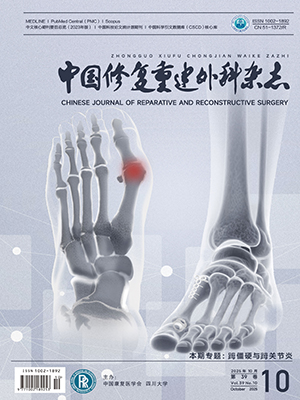| 1. |
Triana L, Palacios Huatuco RM, Campilgio G, et al. Trends in surgical and nonsurgical aesthetic procedures: A 14-year analysis of the International Society of Aesthetic Plastic Surgery-ISAPS. Aesthetic Plast Surg, 2024, 48(20): 4217-4227.
|
| 2. |
Sisti A, Sisti G, Nisi G. Female genital and vaginal plastic surgery: an overview. Plast Reconstr Surg, 2020, 145(4): 872e-873e.
|
| 3. |
Clerico C, Lari A, Mojallal A, et al. Anatomy and aesthetics of the labia minora: the ideal vulva? Aesthetic Plast Surg, 2017, 41(3): 714-719.
|
| 4. |
Frojo G, Kareh AM, Probst KX, et al. Defining ideal external female genital anatomy via crowdsourcing analysis. Aesthet Surg J, 2022, 42(5): 505-515.
|
| 5. |
Hunter JG. Labia minora, labia majora, and clitoral hood alteration: Experience-based recommendations. Aesthet Surg J, 2016, 36(1): 71-79.
|
| 6. |
Alter GJ. Labia minora reduction using central wedge technique: central wedge technique. Clin Plast Surg, 2022, 49(4): 447-453.
|
| 7. |
Xia Z, Liu CY, Yu N, et al. Three-step excision: An easy way for composite labia minora and lateral clitoral hood reduction. Plast Reconstr Surg, 2021, 148(6): 928e-935e.
|
| 8. |
Zhou Y, Li Q, Li S, et al. Trilobal methods for composite reduction labiaplasty. Aesthetic Plast Surg, 2022, 46(3): 1472-1480.
|
| 9. |
Haylen BT, Vu D, Wong A. Surgical anatomy of the vaginal introitus. Neurourol Urodyn, 2022, 41(6): 1240-1247.
|
| 10. |
Liu M, Li Q, Li S, et al. Preliminary exploration of a new clitoral hood classification system and treatment strategy. Aesthetic Plast Surg, 2022, 46(6): 3080-3093.
|
| 11. |
Ostrzenski A. The clitoral infrafrenulum fascial bundle: the anatomy and histology. Clin Anat, 2018, 31(6): 907-912.
|
| 12. |
Cao Y, Li F, Li S, et al. A preliminary observational study on the vascular, nerve, and lymphatic anatomy and histology of the labia minora from cadaveric and surgical samples. Int Urogynecol J, 2021, 32(5): 1169-1176.
|
| 13. |
Gress S. Composite reduction labiaplasty. Aesthetic Plast Surg, 2013, 37(4): 674-683.
|
| 14. |
Sinnott CJ, Glickman LT, Natoli NB, et al. Outcomes, techniques, and risk factors for dehiscence in central wedge labiaplasty. Ann Plast Surg, 2020, 85(S1 Suppl 1): S68-S75.
|
| 15. |
周宇, 李峰永, 李强, 等. 一体化设计的三叶瓣法在小阴唇-阴蒂包皮复合整形术中的应用. 中华整形外科杂志, 2024, 40(12): 1263-1272.
|




